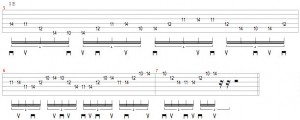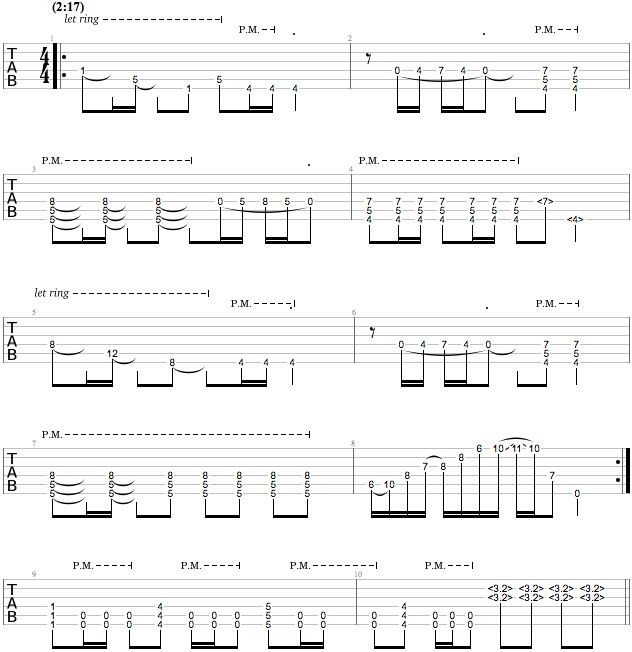Hey guys! Welcome again to my “Technical Difficulties” column – this is number 6 already! As the title suggests, this is the second part of a previous column I wrote for Guitar Messenger, so feel free to check it out and leave me comments in the “Ask Francesco” section of the forum.
This time I am going to dive a little deeper into the Octatonic scale. I want to show you some of the sounds “hidden” inside the typical diminished shapes that all guitar players know and have come to love and use on a consistent basis.
It is really interesting to see all the different tensions and arpeggios/chords that can be extracted from it. You will see in particular how bluesy some of the lines sound; also, to really hear a great master on this specific subject I would suggest that you listen to Scott Henderson. Make sure to pay attention to how he creates a unique sound by mixing and constantly elaborating on these ideas.
Example 1:
This example shows some of the linear fingerings and shapes that can be used for mixing different note groupings.
1

Example 2:
This example starts with a very cool sounding arpeggio (first septuplet: T 4 b5 b6 M7 T m3) that changes into one of the more blues sounding shapes I was mentioning before…this is a good example of a fast line with different and dense sounds inside.
2

Example 3:
This example is based on a more traditional shape (string skipping minor thirds) but it also combines variations with adjacent figures. This one has a definite Holdsworth sound to it.
3

Example 4a:
This is a pretty simple line that combines a lot of the ideas I talked about before.
4a

Example 4 b:
This is an Octave/Displaced variation of the previous example. Same exact notes, but very different effect… it is also very hard to play.
4b

Example 5:
This example is based on a series of arpeggios played in groups of quintuplets. These are the chords implied by this entire line: C7 #11 / C7 #11 13 / Eb –7 b5 13 / Eb – 7 b9 / E – b5 M7 #11.
This example shows a good variety of sounds that can be extracted from within the Octatonic Scale.
5

Example 6:
This is a cyclical lick that always starts with a whole-half-whole 4 note per string 10 note group, and mixes in between the more traditional 3 note per string fingerings creating an A section-B section effect. The precise notation of the time signature shows the exact groupings, but I would suggest that you play the lick over a steady 4/4 meter to create a “moving around the pulse” type sound.
6

Example 7:
This is the tapping lick of this series of licks. It is based on different patterns that create diverse groupings (3-4-7-9-….). I am using all the different patterns and combinations we talked about before.
7

Example 8:
This one is more of a Holdsworth sounding lick based on a 19-note pattern that repeats symmetrically twice. The lick then varies with different mixed shapes that end at the end the highest note.
8

These 9 different ideas represent just a SMALL example of the different possibilities that can be created using the Octatonic Scale. A lot of these ideas are still very much based on repeating patterns, but they show some of the potential that is often ignored by guitar players.
See you next time!
















